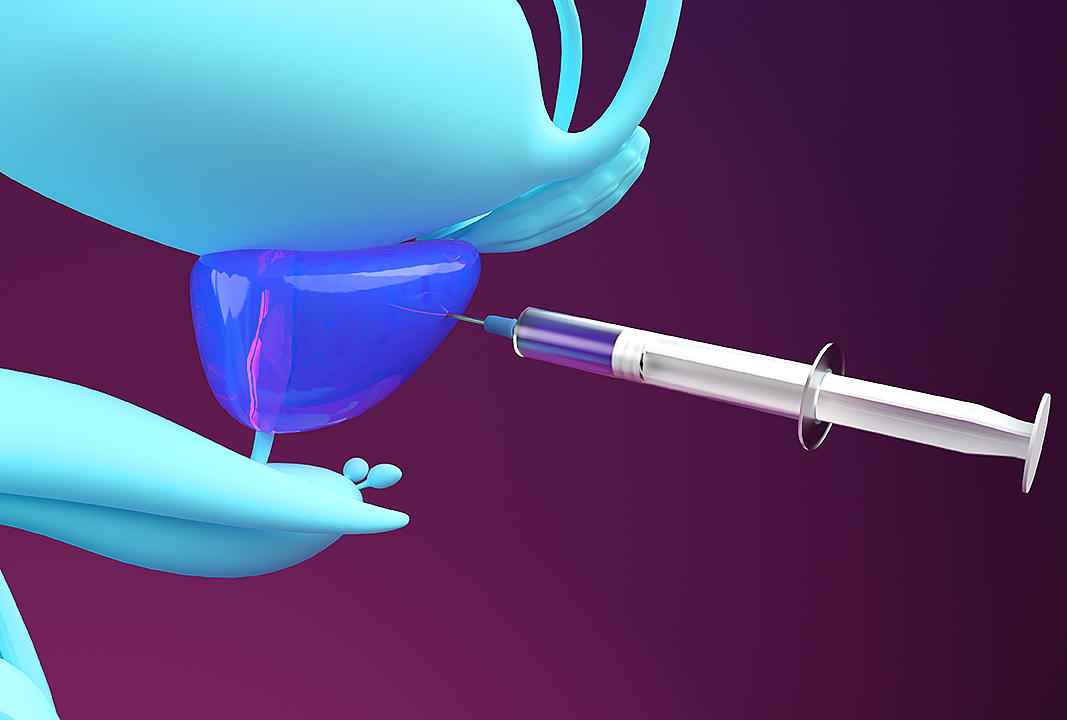Can Botox Help Treat an Enlarged Prostate?

Botox is an injectable anti-aging treatment that has been widely used for many years to reduce the appearance of fine lines and wrinkles. Recent evidence, though, shows that Botox may also reduce symptoms of an enlarged prostate (benign prostatic hyperplasia, or BPH), and improve quality of life in men who suffer from this potentially serious condition.
The use of Botox for this condition remains outside of standard practice by urologists—it's still in the investigative stages. Doctors await further studies on the efficacy of Botox and whether it may be a future option for men with BPH. Here's what you should know about this possible new treatment.
How does Botox work?
Botox is a drug that relaxes muscles in the face and neck to reduce the appearance of wrinkles, including laugh lines and crow's feet. The active ingredient in Botox is a neurotoxin called botulinum toxin type A, which is produced by the Clostridium botulinum bacterium commonly found in plants, soil and water.
Botulinum toxin type A blocks the chemical signals from nerves that cause muscles to contract. In addition to being used to reduce signs of aging, Botox may be used as a therapeutic treatment for chronic migraines, excessive sweating, eye twitching and bladder dysfunction.
Botox and the prostate
An enlarged prostate is commonly treated using alpha blockers that relax muscles in the prostate and bladder to increase urine flow and reduce other symptoms. However, Harvard Medical School reports that alpha blockers are effective in only 70 percent of men with an enlarged prostate, and produce a range of side effects including headaches, low blood pressure and fainting.
Like alpha blockers, Botox can reduce symptoms of an enlarged prostate by effectively relaxing prostate and bladder muscles. Research published in BMC Urology suggests that Botox may also cause cells in the prostate to die, thus reducing the size of the prostate to improve urine flow and minimize bladder discomfort.
Clinical trials are promising
Studies on the effects of Botox in men with an enlarged prostate show that this treatment is highly promising and produces fewer side effects than medications and surgery. In the aforementioned BMC Urology study, researchers injected Botox directly into the prostate glands of men who did not respond to conventional medical treatments for enlarged prostate. Within one year, 73 percent of these men experienced a 30 percent improvement in urinary tract symptoms and quality of life, and experienced no significant side effects.
In a study published in the journal Urology, 10 men with an enlarged prostate received an injection of Botox in their prostate glands, and all experienced a near-immediate improvement in urinary symptoms. Maximum effects were observed at one week after treatment and lasted between three and six months. None of the men in this study experienced side effects. Bear in mind, of course, that this was a very small sample size.
Researchers who evaluated several studies of the effects of Botox on an enlarged prostate concluded that this treatment has long-term effects on keeping the prostate small and reducing lower urinary tract symptoms. They also concluded that Botox may be especially ideal for men who are not eligible for surgical prostate treatments or men who want to avoid long-term use of medications.
Your next steps
Though Botox has shown promise for the treatment of an enlarged prostate, it remains approved only as a cosmetic treatment for fine lines and wrinkles, and as a therapeutic treatment for medical conditions including migraines, overactive bladder and severe sweating. However, some doctors may practice off-label use of Botox on patients with an enlarged prostate who cannot tolerate or do not respond to other treatments.
If you have been diagnosed with an enlarged prostate and your symptoms are still severe after receiving other treatments, ask your doctor about the possibility of receiving Botox injections. Your doctor may determine whether this treatment is safe for you based on your medical history and unique situation.


















